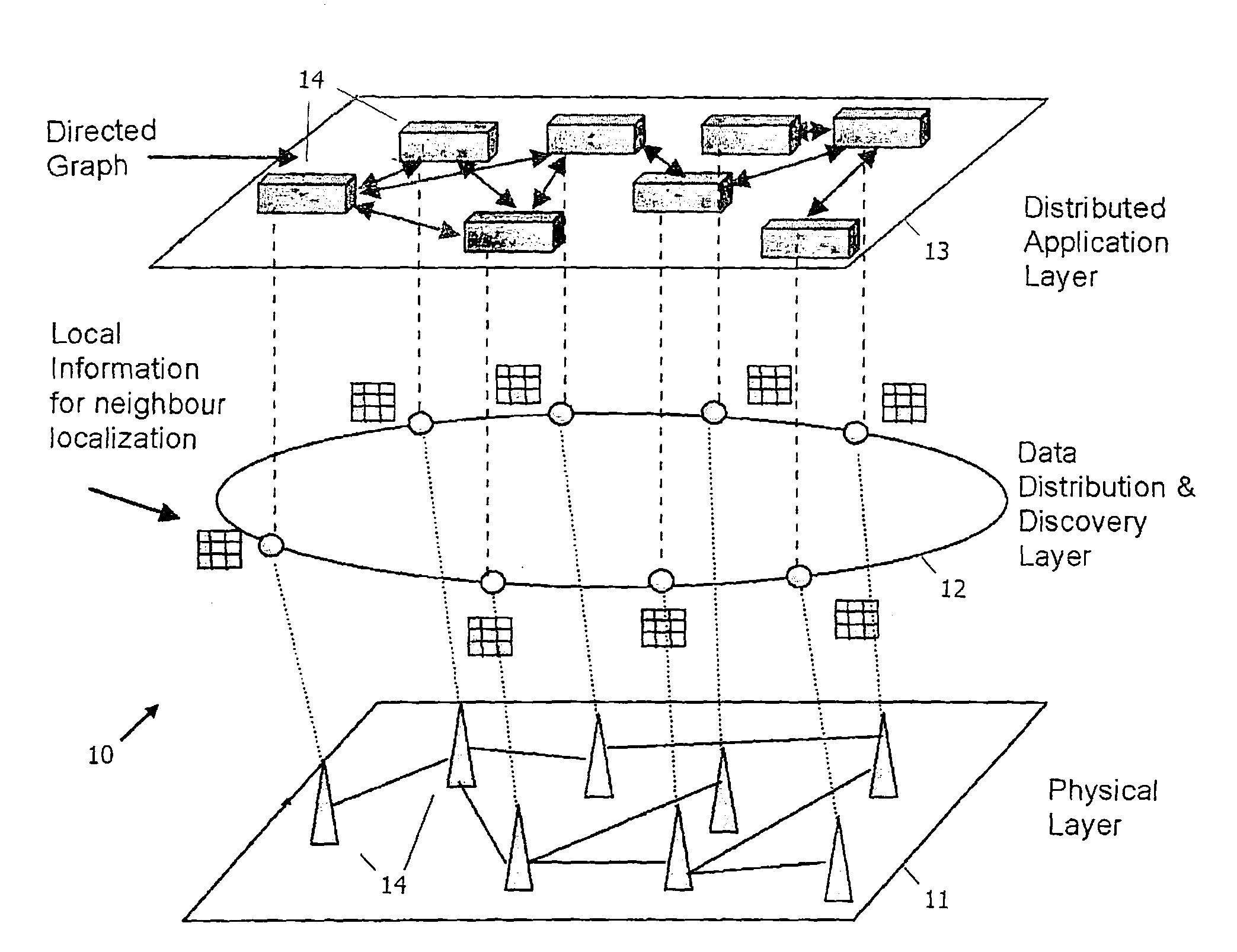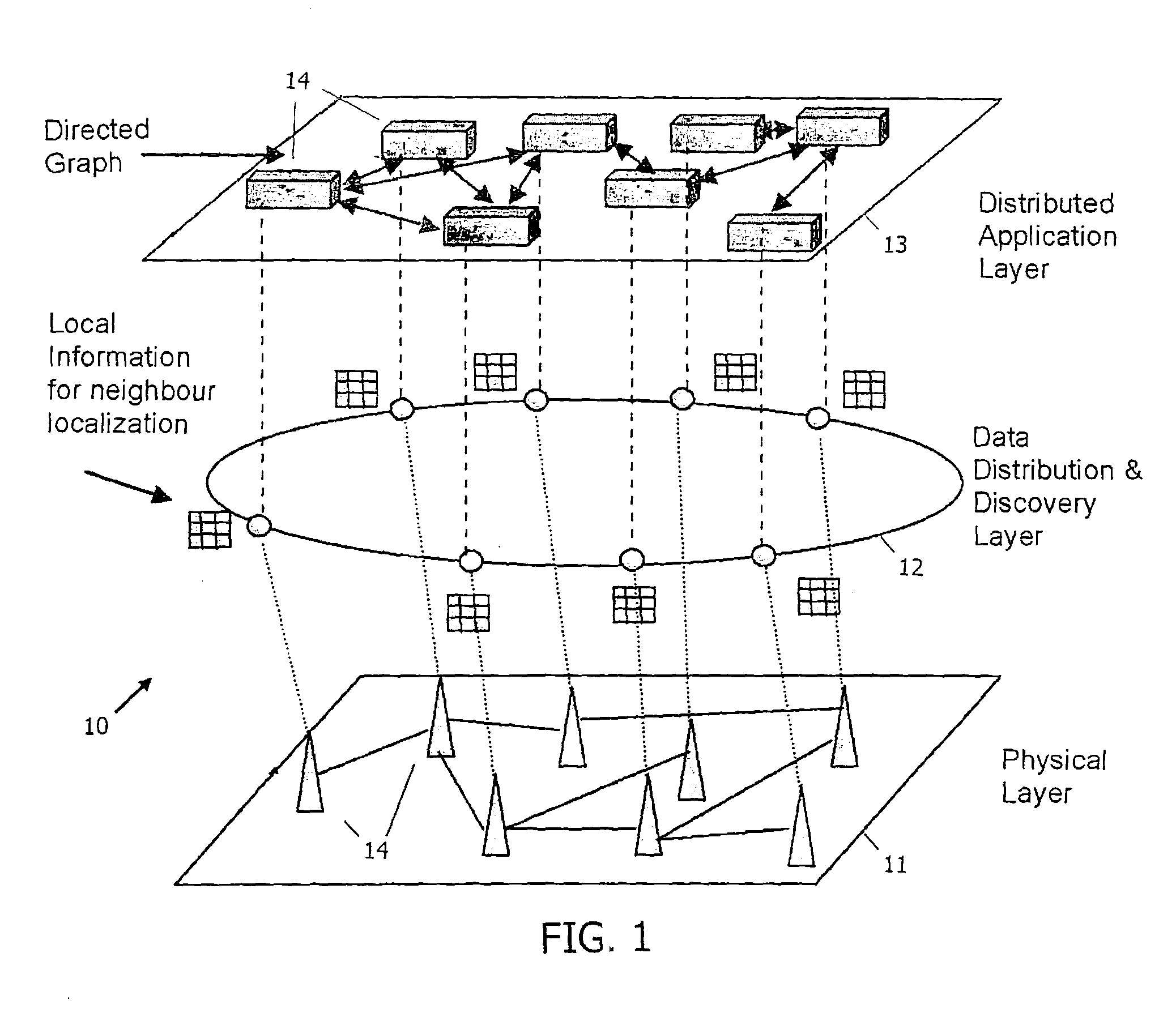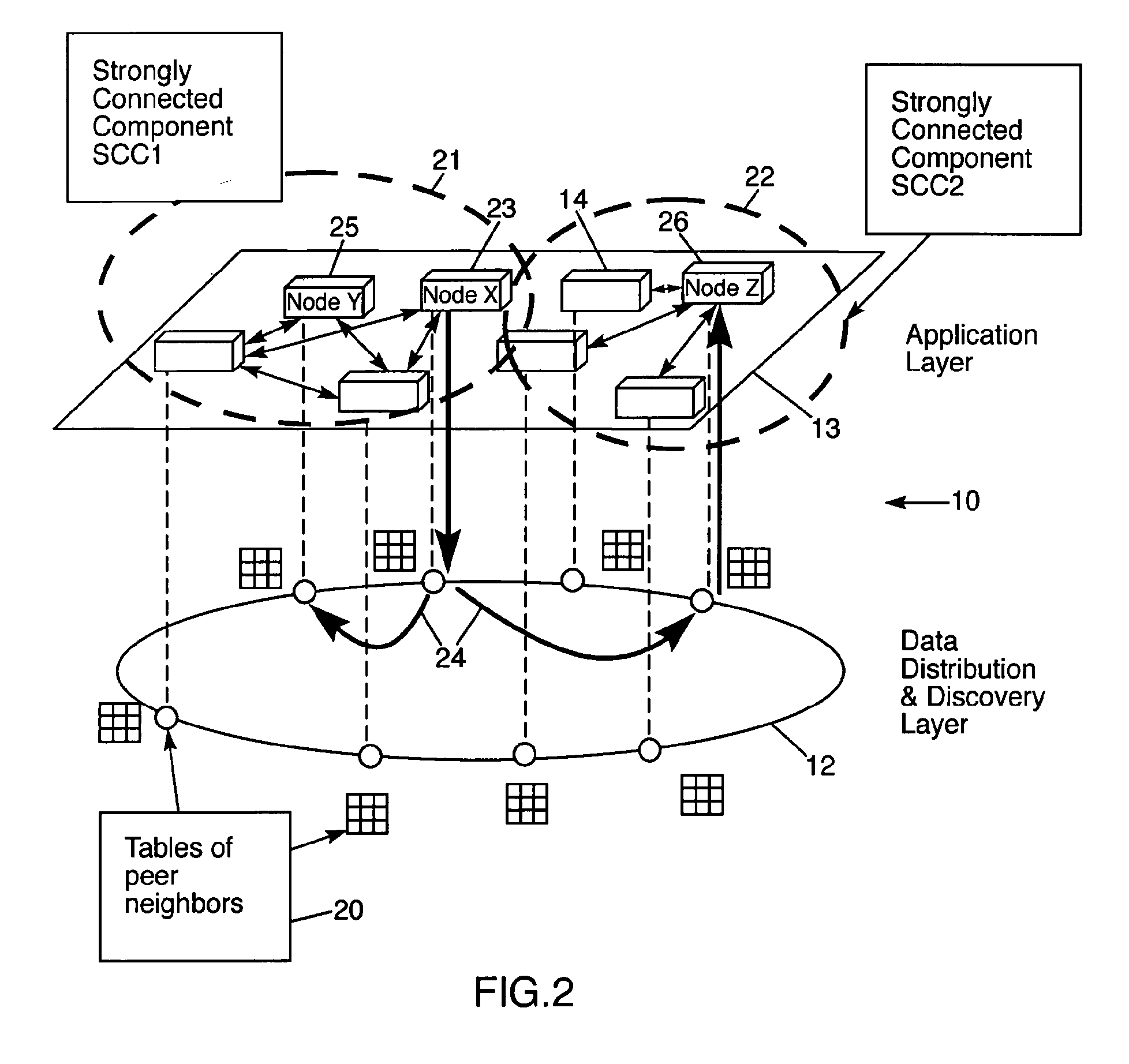Discovery of Disconnected Components in a Distributed Communication Network
- Summary
- Abstract
- Description
- Claims
- Application Information
AI Technical Summary
Benefits of technology
Problems solved by technology
Method used
Image
Examples
Embodiment Construction
[0021]The present invention propagates requests beyond neighbors in an application-level relations graph, so that separate components of the graph can be reached. The invention solves the problems arising from graphs which are not strongly connected, by reason of a specific configuration or due to a fault in the graph. The invention solves the problem in a distributed way without relying on a central knowledge repository.
[0022]The methodology described herein builds on existing concepts such as peer-to-peer systems and epidemic algorithms. The goals of discovering distributed network nodes and management information, detecting inconsistent management information in the nodes, and distributing network management tasks to the nodes require some form of peer-to-peer architecture, which allows nodes to directly communicate with each other and collaborate together, so as to accomplish specific network management tasks. In peer-to-peer systems, each node has partial knowledge of the netwo...
PUM
 Login to View More
Login to View More Abstract
Description
Claims
Application Information
 Login to View More
Login to View More - R&D
- Intellectual Property
- Life Sciences
- Materials
- Tech Scout
- Unparalleled Data Quality
- Higher Quality Content
- 60% Fewer Hallucinations
Browse by: Latest US Patents, China's latest patents, Technical Efficacy Thesaurus, Application Domain, Technology Topic, Popular Technical Reports.
© 2025 PatSnap. All rights reserved.Legal|Privacy policy|Modern Slavery Act Transparency Statement|Sitemap|About US| Contact US: help@patsnap.com



